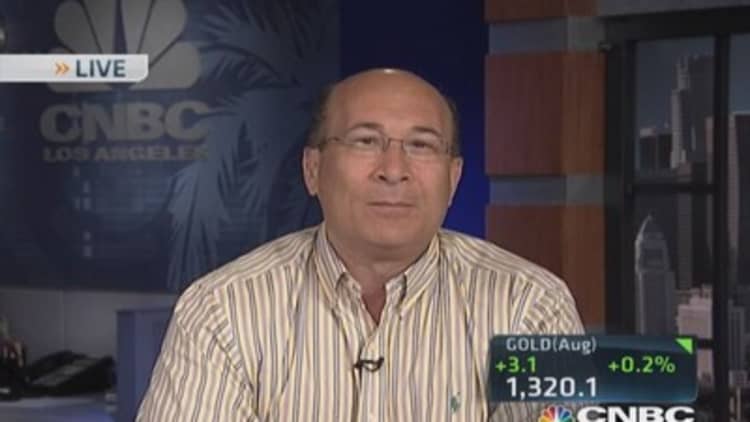Equity, commodity and currency markets are experiencing historically low volatility, but one critical market variable stands out in the seemingly stable environment.Treasury Inflation Protected Securities (TIPS), a proxy for expectations of U.S. economic growth, were extremely volatile over the past year, according to market watchers.
"The volatility of TIPS yield return reflects the market's uncertainty about the growth prospects of the U.S. economy," said David Goldman, managing director and head of Americas at Reorient Research.
TIPS yield volatility has more than doubled since the beginning of the year, according to Reorient.
"The consensus forecast might still be rosy, but there are two components of any forecast—our best guess about what will happen, and our degree of confidence about our best guess. The market may believe in improved U.S. growth but it is a low confidence forecast," Goldman added.
The world's largest economy rebounded more strongly than initially thought in the second quarter. This week, gross domestic product was revised up to 4.2 percent on-year versus the previously reported 4 percent pace.

But recent economic data releases provide conflicting signals. The pace of growth in the U.S. services sector fell for a second straight month in August, dropping to its lowest level since May, according to a survey by financial data firm Markit. On the other hand, the Conference Board's index of consumer confidence rose to 92.4 in August, the highest since October 2007.
Growth uncertainty is the precise message that's coming out of TIPS volatility, said Nizam Idris, head of strategy, fixed income and currencies at Macquarie.
Read MoreInvestors basically have no fear about volatility
In addition to the mixed bag of economic data, the market is increasingly worried about the economic outlook for Europe and Japan.
"The question is whether the U.S. can ignore the fact that two out of the world's three major economies are in a state of funk and continue growing at a fast pace," he said.
Read MoreDon't sweat lowvolatility in this market
"The debate now is whether we'll see slower than normal growth in the U.S. or a full blown recovery. I'm in the former camp," he added.
The consequence of this is that the U.S. is likely to hike interest rates at a slower pace and pause at lower levels compared with historical levels, Idris said.


